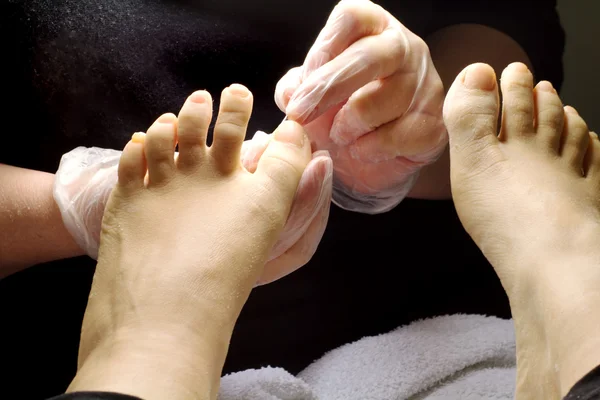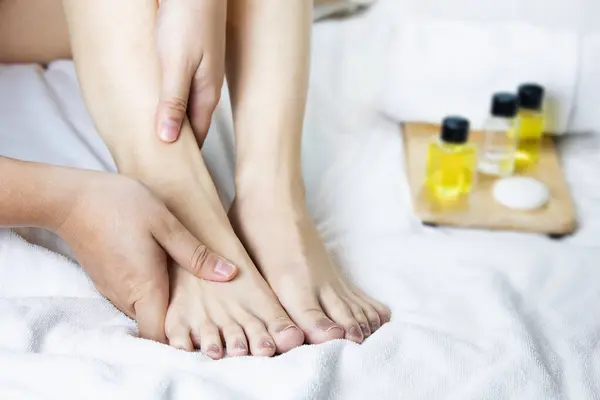How to remove thick dead skin from feet Begin by soaking your feet in warm water with a tablespoon of Epsom salt, followed by gently exfoliating using a pumice stone to slough off the dead skin and reveal smoother, softer feet.
Step into a world where smooth, baby soft feet aren’t just a dream but a reality waiting to be unveiled. Unveiling the secrets to transform your feet from rough terrain to silky smooth haven is an art, and we’ve mastered the brushstrokes.
Bid farewell to the tyranny of thick, stubborn dead skin that has overstayed its welcome on your feet. In this guide, we embark on a journey to discover the most effective techniques, tips, and tricks to banish calluses and unveil the true potential of your feet.
Get ready to walk on clouds as we decode the secrets of liberating your soles from the clutches of roughness, unveiling a path where every step is a celebration of velvety softness. Let the transformation begin, and let your feet steal the spotlight!
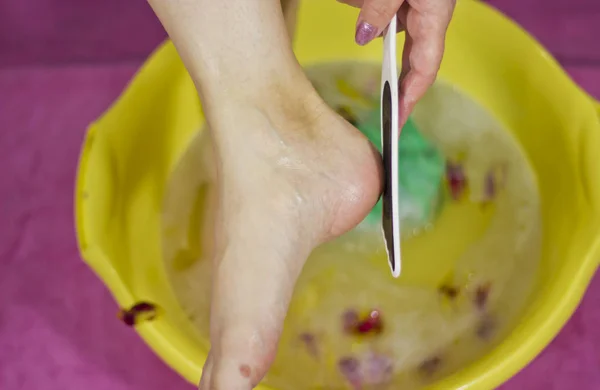
How To Remove Thick Dead Skin From Feet
Are you wondering how to remove thick dead skin from your feet? Look no further! We’ve compiled effective methods to help you achieve baby-soft feet in no time.
Soak and Soften
Begin by soaking your feet in warm, soapy water for at least 10-15 minutes. This not only helps to soften the skin but also prepares it for easier removal.
Exfoliate with a Pumice Stone
Gently scrub the softened skin using a pumice stone in circular motions. The abrasive texture of the stone aids in removing dead skin cells, leaving your feet smoother.
DIY Scrubs
Create a natural foot scrub using ingredients like sugar, salt, or coffee grounds. These exfoliants work wonders in sloughing off dead skin, revealing healthier skin underneath.
Moisturize Adequately
After exfoliation, generously apply a moisturizing cream or petroleum jelly to keep your feet hydrated. This helps prevent the return of thick dead skin and maintains overall foot health.
Regular Maintenance
Incorporate these steps into your routine for optimal results. Regular maintenance ensures that your feet stay soft and free from the discomfort of thick dead skin.
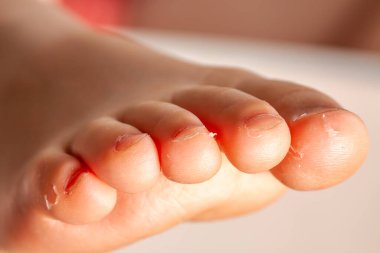
Understanding Thick Dead Skin
Understanding thick dead skin is crucial for maintaining healthy and supple skin. The causes of this condition are diverse, often stemming from a lack of moisture, excessive friction, and pressure on specific areas, or underlying medical conditions such as calluses and corns.
When people discuss thick dead skin, they commonly use terms like rough patches, dry and hardened areas, or even phrases like “tough skin” or “rough spots.” Identifying the severity of thick dead skin is essential for effective treatment and prevention.
To address this concern, it’s important to adopt a moisturizing routine, minimize friction, and consult with a healthcare professional for conditions requiring specialized care. Achieve smoother, healthier skin by understanding and addressing the root causes of thick dead skin.
Preparing for the Removal Process
Discovering the nuances of understanding thick dead skin is crucial for effective skincare. Causes such as a lack of moisture, constant friction, and pressure, along with underlying medical conditions like calluses and corns contribute to the development of this common concern.
Individuals often describe this condition using terms like rough patches, hardened skin, or even calloused areas.
Identifying the severity of thick dead skin involves assessing factors like texture, discoloration, and pain levels. Combatting these issues begins with addressing root causes, embracing proper moisturization, and seeking targeted treatments.
Elevate your skincare routine by gaining insights into the causes and severity indicators of thick dead skin, and unlock a healthier, smoother complexion.
Soaking the Feet
Indulging in a soothing foot soak is a rejuvenating ritual that holds paramount importance in holistic self-care. The therapeutic benefits of foot soaking extend beyond mere relaxation, encompassing the alleviation of stress, enhancement of circulation, and the soothing relief of tired, achy feet.
To embark on this revitalizing journey, one must follow a few simple yet essential steps for an effective foot soak. Firstly, fill a basin with comfortably warm water, a phrase often used to describe the ideal temperature that promotes muscle relaxation.
Next, enhance the experience by incorporating Epsom salt or a specialized foot soak solution, known for their detoxifying and skin nourishing properties. Finally, immerse your feet in the rejuvenating soak for 10-15 minutes, allowing the revitalizing blend to work its magic.
This self-care practice is not only a treat for the feet but also a holistic remedy for overall well-being. Elevate your relaxation routine and prioritize self-care by incorporating the therapeutic art of foot soaking into your daily regimen.
Exfoliating with Pumice Stone or Foot File
Achieving smooth and callus-free feet involves selecting the right exfoliation tool, and two popular choices are the pumice stone and foot file. When choosing between the two, it’s essential to consider your skin type and the level of exfoliation needed.
To maximize effectiveness, employ specific techniques during the exfoliation process. Begin by gently rubbing the pumice stone or foot file in circular motions, targeting rough patches and calloused areas. Prioritize thicker skin regions, such as the heels and sides of the feet, for thorough exfoliation.
However, exercise caution and avoid applying excessive pressure to prevent injuries or abrasions.
Incorporating these techniques into your foot care routine can leave your feet feeling soft, revitalized, and free from unwanted calluses. Elevate your self-care with the right exfoliation tool and techniques for a confident step forward.
Treating Calluses and Corns
When it comes to addressing the discomfort caused by calluses and corns, it’s crucial to start by accurately identifying these thickened patches of skin. Recognizing the telltale signs, such as hardened areas and localized pain, is the initial step in effective treatment.
To alleviate the discomfort, soften the affected regions by regularly moisturizing with specialized creams or using natural remedies like coconut oil. Carefully incorporating a pumice stone or file into your routine helps to gently exfoliate these toughened areas, promoting smoother skin.
However, for persistent cases, seeking professional assistance from a podiatrist ensures expert care and tailored solutions, bringing relief to even the most stubborn calluses and corns. Take proactive steps to reclaim your comfort by following these strategies for optimal foot health.
Moisturizing and Hydrating
Importance of Moisturizing
Achieving a dewy and supple complexion is a universal beauty goal, and the key lies in understanding the importance of moisturizing.
Moisturizers play a pivotal role in maintaining the skin’s natural moisture balance, preventing dryness, flakiness, and promoting a youthful glow. The quest for radiant skin begins with this fundamental step in skincare.
Choosing the Right Moisturizer
Selecting an effective moisturizer involves a thoughtful consideration of ingredients and a commitment to avoiding harsh chemicals. Look for hydrating heroes like hyaluronic acid, glycerin, and ceramides.
These components work synergistically to replenish the skin’s moisture reservoir, resulting in a revitalized and plump appearance.
Say no to harsh chemicals such as sulfates and parabens, opting for clean formulations that prioritize skin health.
Applying Moisturizer after the Removal Process
The skincare journey doesn’t end with cleansing; it extends to the crucial step of moisturizing, especially after the removal process.
Following cleansing, applying a nourishing moisturizer helps to lock in hydration, providing a protective barrier against environmental stressors. This final touch ensures that your skin remains moisturized, supple, and ready to face the day.
Additional Tips for Foot Care
Ensure optimal foot health with these additional tips for foot care, starting with a consistent and thorough maintenance routine (A). Regularly pamper your feet by soaking them in warm water, gently exfoliating, and moisturizing to keep them soft and supple.
Next, prioritize wearing comfortable and well-fitting shoes (B) to prevent issues such as blisters, calluses, and bunions. Choose footwear with proper arch support and ample room for your toes to avoid discomfort.
Lastly, don’t overlook the importance of managing underlying health conditions (C) that may affect your feet, such as diabetes or arthritis.
By addressing these aspects, you can take proactive steps towards maintaining healthy and happy feet. Elevate your foot care routine to new heights with these essential practices.
Precautions and Contraindications
Prior to engaging in any health or beauty regimen, it is imperative to prioritize safety by adhering to essential precautions and contraindications. A. It is highly recommended to seek professional medical advice, particularly if individuals have underlying health conditions or concerns.
B. Opting for non-aggressive methods is crucial to prevent potential adverse effects and ensure a gentle approach to personal care.
C. Checking for allergies to products used is essential to safeguard against any allergic reactions. It is paramount to be mindful of these precautions to promote a safe and effective wellness routine. Seek medical guidance, choose gentle approaches, and be vigilant about potential allergies for a secure and enjoyable self-care experience.
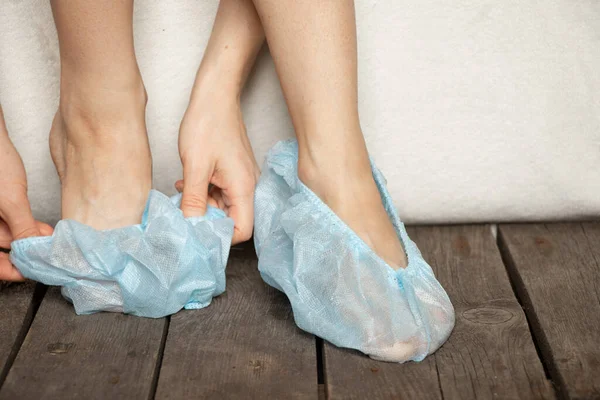
FAQs

